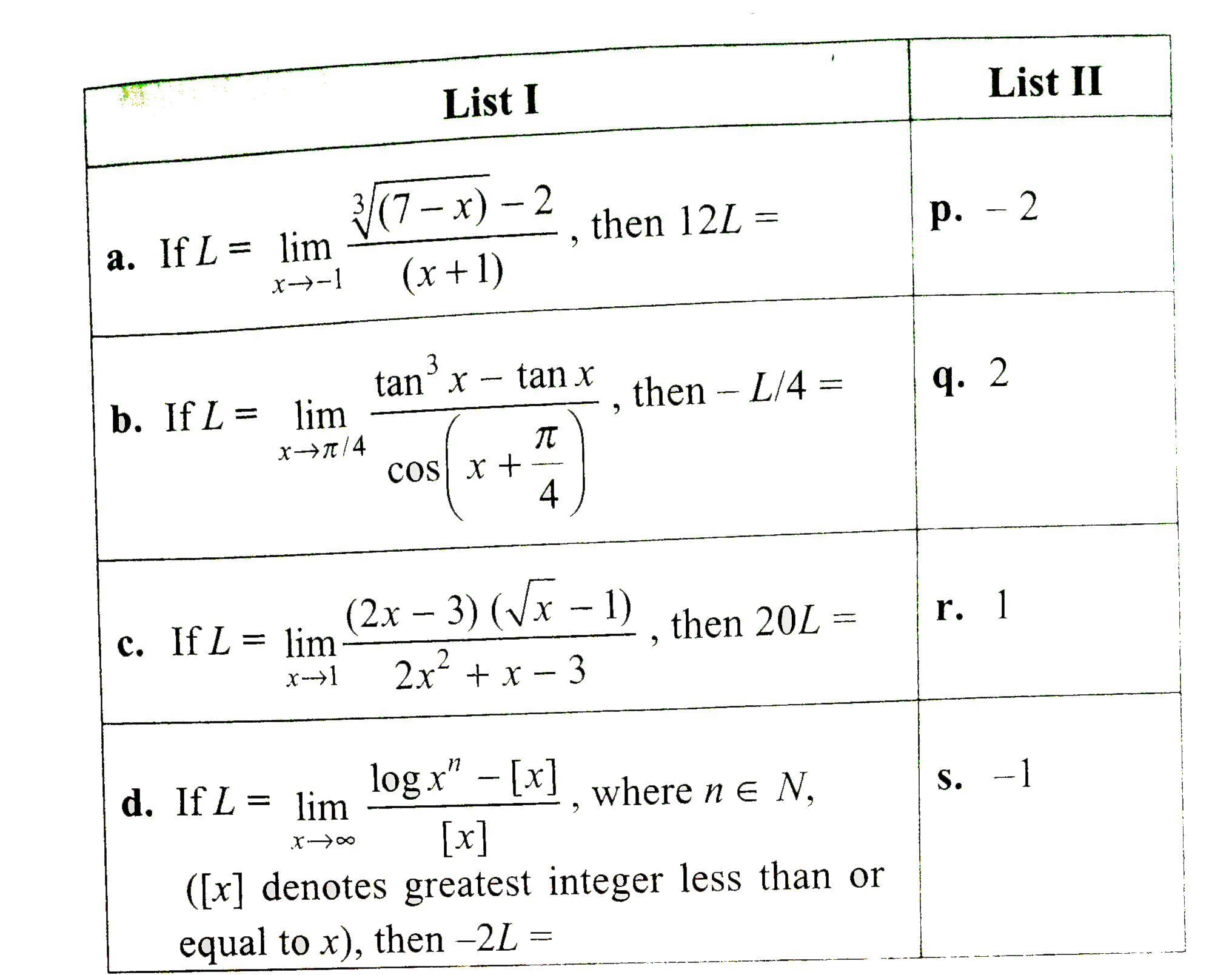If x1=3andxn+1=√2+xn,n≥1,then(lim)x→∞xn is −1 (b) 2 (c) √5 (d) 3Solution in Bengali
0
12
log2
e4
The correct Answer is:B
xn+1=√2+xn
or limn→∞xn+1=√2+limn→∞xn
or t=√2+t (∵limx→∞xn+1=limx→∞xn=t)
or t2−t−2=0
or(t−2)(t+1)=0
or t=2 (∵xn>0∀n,t>0)
Topper's Solved these Questions
- LIMITSBOOK - CENGAGE PUBLICATIONCHAPTER - LIMITSEXERCISE - Linked Comprehension Type
20 Videos
- LIMITSBOOK - CENGAGE PUBLICATIONCHAPTER - LIMITSEXERCISE - Matrix Match Type
5 Videos
- LIMITSBOOK - CENGAGE PUBLICATIONCHAPTER - LIMITSEXERCISE - EXERCISE 2.8
8 Videos
- JEE 2019BOOK - CENGAGE PUBLICATIONCHAPTER - JEE 2019EXERCISE - Chapter 10
8 Videos
- LINEAR COMBINATION OF VECTORS, DEPENDENT AND INDEPENDENT VECTORSBOOK - CENGAGE PUBLICATIONCHAPTER - LINEAR COMBINATION OF VECTORS, DEPENDENT AND INDEPENDENT VECTORSEXERCISE - DPP 1.2
10 Videos
Similar Questions
Letf(x)=sin−1(1−{x})×cos−1(1−{x})√2{x}×(1−{x}), where {x} denotes the fractional part of x.
L=limx→0−f(x) is equal to
View SolutionMatch the following lists:

View SolutionEvaluate limx→1cosπ2x1−√x
View SolutionIf y = y(x) is the solution of the differential equation, xdydx+2y=x2 satisfying y(1) = 1, then y(12) is equal to
View SolutionThe number of integral values of p for which (p+1)ˆi−3ˆj+pˆk,pˆi+(p+1)ˆj−3ˆk and −3ˆi+pˆj+(p+1)ˆk are linearly dependent vectors is q
View SolutionIf x1=3 and xn+1=√2+xn,n≥1,then(lim)x→∞xn is (a) −1 (b) 2 (c) √5 (d) 3
View SolutionIf x1,x2,x3….,xn are in H.P. prove that x1x2+x2x3+x3x4+……….+xn−1xn=(n−1)x1xn
View SolutionIf x1=3andx+1=√2+xn,n≥1, then limn→∞xn is equal to
View SolutionIf x0=3 and xn+1=xn√xn+1 , then x3=
View SolutionIf x1=3 and xn+1=√2+xn,n≥1,then(lim)x→∞xn is (a) −1 (b) 2 (c) √5 (d) 3
View SolutionIfSn=[11+√n+12+√2n++1n+√n2],then(lim)n→∞Sn is equal to (a)log 2 (b) log4 (c)log 8 (d) none of these
View SolutionLet U1=1, U2=1 and Un+2=Un+1+Unforn≥1. use mathematical induction to show that: Un=1√5{(1+√52)n− (1−√52)n} for all n≥1.
View SolutionProve that the sequence with the general term
(a) x1=1−(−1)nn
(b) xn=1nsin[(2n−1)π2]
View SolutionProve the existence of limits of the following sequences and find them.
(a) √2,√2√2,√2√2√2......,
(b) xn=cn/k√n!(c>0,k>0,
(c) xn=αnn, where αn is the nth of the number π.
View SolutionIf x1=√3andxn+1=xn1+√1+x2n,∀n∈N then limn→∞2nxn is equal to
View SolutionSuppose x1=tan−12>x2>x3>.... are the real numbers satisfying sin(xn+1−xn)+2−(n+1)⋅sinxn⋅sinxn+1 for all n>1 and l=limx→∞xn , the value of [4l] is...where [t] denotes greatest integer function.
View Solution
